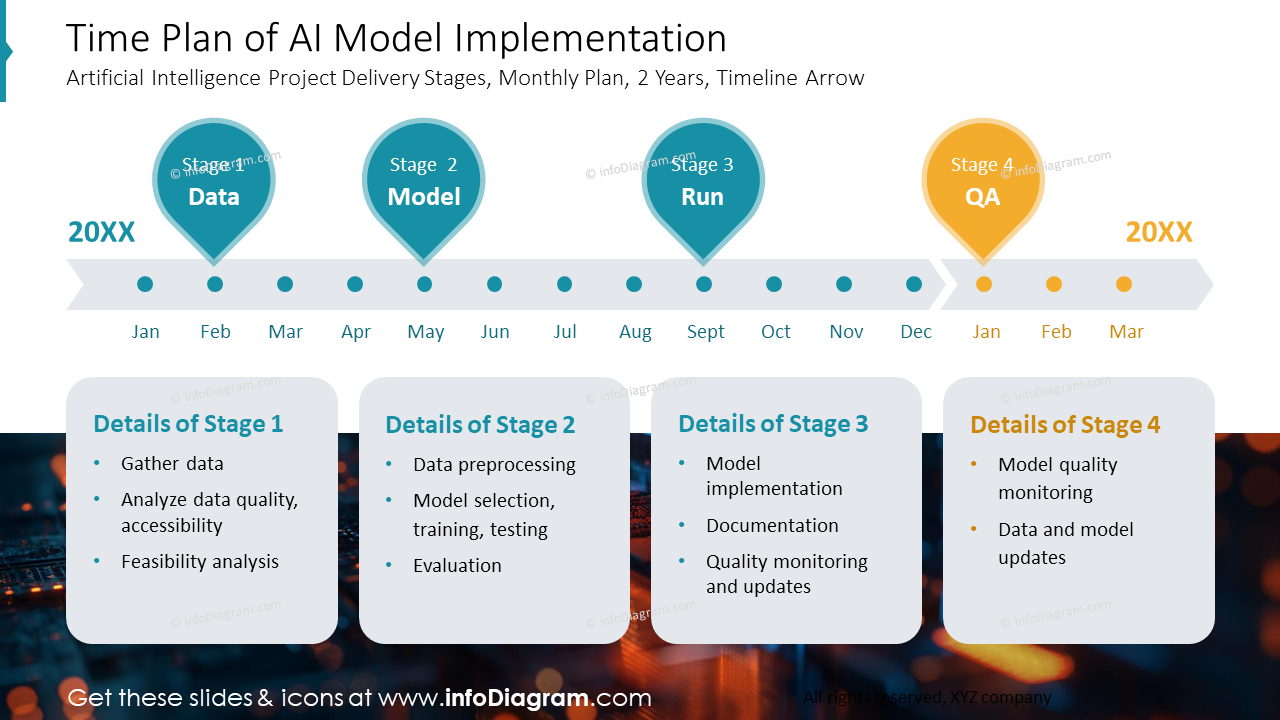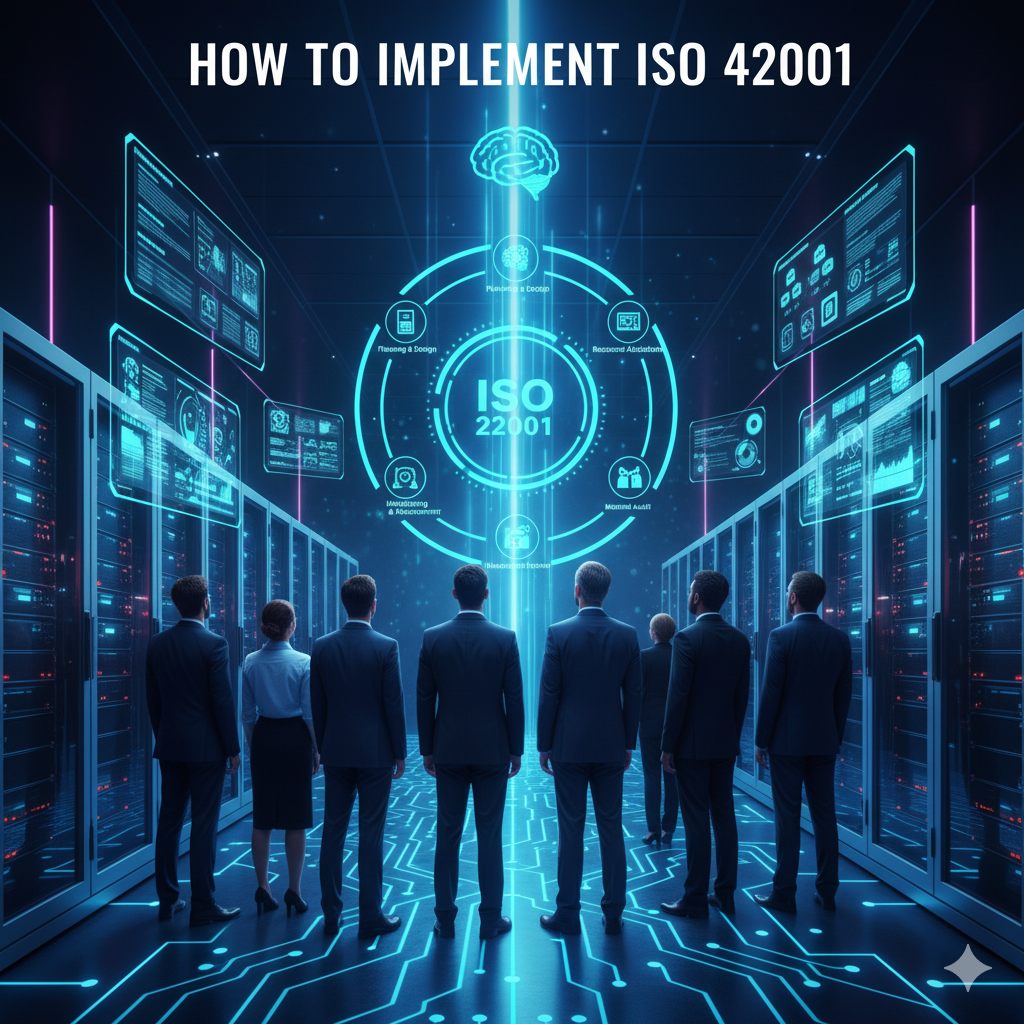AI orchestration is the coordination and management of multiple artificial intelligence models, systems, and integrations to work together effectively within a unified framework.
Modern organizations deploy dozens of AI tools across different departments and functions. Marketing teams use AI for content generation, finance departments rely on AI for fraud detection, and operations teams implement AI for supply chain optimization. These isolated AI applications often operate independently without sharing data or insights.
AI orchestration transforms this fragmented approach by connecting AI systems, automating workflows, and managing resources across the entire AI ecosystem. The orchestrated approach enables different AI models to communicate, share information, and collaborate on complex tasks that no single system could handle alone.
How AI Orchestration Functions
AI orchestration operates through three core mechanisms that enable seamless coordination between different AI systems. Integration connects AI tools, databases, and system components within a cohesive solution through automated data pipelines that organize, store, and move information throughout an organization.

Source: Sendbird
Automation handles tasks traditionally performed by humans and extends to manage interactions between different AI tools and systems. Automated deployment systems distribute new AI models across various environments, while self-healing systems detect and correct errors without human intervention.
Management provides oversight and control over the entire AI ecosystem through governance structures, monitoring capabilities, and performance optimization mechanisms. Management functions include establishing policies for AI risk management and ensuring AI systems align with organizational values.
Consider a financial services company processing loan applications. Traditional approaches might use separate AI systems for credit scoring, fraud detection, and document verification. An orchestrated approach coordinates these systems so credit scoring results inform fraud detection algorithms, while document verification feeds real-time data to both systems for more accurate decisions.

Source: SoluLab
Key Components of AI Orchestration Systems
Centralized management platforms provide unified oversight and control of AI workflows across diverse applications. These platforms maintain visibility over entire AI ecosystems while implementing consistent policies and procedures throughout the organization.
Workflow automation streamlines AI processes by coordinating multi-step procedures and managing dependencies between different AI components. Automation mechanisms handle both batch and real-time processing requirements while adapting to changing conditions and recovering from failures.
Data management ensures quality, security, and accessibility of information flowing through orchestrated systems. Modern AI orchestration requires both structured knowledge in graph formats and unstructured data from documents and conversations to function effectively.
Monitoring and analytics provide real-time insights into AI system performance through comprehensive tracking of key performance indicators, inference latency, and accuracy metrics. Advanced monitoring extends beyond traditional infrastructure metrics to include AI-specific telemetry across the entire ecosystem.
Primary Benefits of Implementation
Organizations implementing AI orchestration report measurable improvements across multiple operational areas. Efficiency gains occur through seamless coordination of multiple AI systems and elimination of manual handoffs between different applications.
Scalability improvements enable organizations to deploy AI capabilities across diverse use cases without extensive manual integration work. Orchestration platforms provide standardized frameworks and interfaces that facilitate rapid deployment of new AI capabilities across multi-cloud environments and on-premises infrastructure.
Enhanced decision-making results from collaborative AI analysis where multiple systems combine individual strengths to provide more comprehensive insights than any single system could deliver. Orchestrated systems rapidly process large data volumes from multiple sources and synthesize results into actionable recommendations.
Accelerated innovation cycles reduce time-to-market for AI-powered solutions by eliminating technical barriers and integration challenges. Orchestration platforms provide standardized frameworks and automated deployment capabilities that enable development teams to focus on creating solutions rather than managing infrastructure complexities.
AI Orchestration vs Traditional Automation
The distinction between AI orchestration and traditional automation represents a fundamental shift in how organizations approach process improvement. Traditional automation focuses on mechanizing repetitive tasks through predetermined rules and workflows. AI orchestration coordinates multiple intelligent systems to work together, making decisions and adapting to changing conditions.

Source: ProcessMaker
Traditional automation operates through rule-based systems that follow predetermined logic patterns. These systems excel at handling routine tasks with consistent inputs and predictable outcomes. AI orchestration combines multiple AI models and systems that can analyze complex data, make informed decisions, and adapt their behavior based on real-time information.
Key differences include decision-making capabilities, where traditional automation executes programmed instructions without deviation, while AI orchestration can evaluate multiple variables, consider context, and choose optimal paths forward. Data processing also differs significantly — traditional automation handles structured data only, whereas AI orchestration manages both structured and unstructured information.
Implementation Approaches
Organizations typically choose from three architectural patterns for AI orchestration implementation. Centralized orchestration involves a single coordinator that oversees all operations, assigns tasks, and monitors performance while ensuring business rules compliance across the system.
.jpg)
Source: Arya.ai
Decentralized orchestration enables AI agents to operate autonomously, communicating directly with each other and dynamically negotiating tasks and responsibilities. This approach provides high adaptability and resilience for fast-moving environments where flexibility outweighs centralized control.
Hybrid models combine centralized oversight with decentralized execution, providing policy management and monitoring while allowing autonomous agent interaction for routine operations. Many organizations adopt hybrid frameworks that balance governance requirements with operational flexibility.
Technology selection requires evaluation of performance characteristics, integration capabilities, scalability requirements, and organizational constraints. Leading platforms include OpenAI, Anthropic, and Google Gemini for full-stack production workloads, while specialized platforms focus on specific requirements such as real-time processing or privacy protection.
Common Implementation Challenges
Integration and compatibility issues represent one of the most frequent challenges in orchestration implementations. Different AI models often use incompatible data formats, communication protocols, and interface standards. Legacy systems add complexity because they typically lack modern APIs and may operate on outdated architectures that resist integration with contemporary AI platforms.
Organizations solve connectivity issues by implementing standardized data transformation layers that convert information between different formats. API gateways serve as translation points between systems with different communication protocols. Middleware solutions bridge gaps between legacy infrastructure and modern AI platforms.
Data quality and management create significant operational challenges when AI models trained on different data standards produce conflicting or unreliable results. Data governance frameworks establish consistent quality standards across all systems participating in AI orchestration.
Security requirements become more complex in orchestrated environments because integrated systems expand attack surfaces and introduce new vulnerability points. Each connection between AI systems represents a potential security risk that requires protection through comprehensive security frameworks.
Industry Applications
Healthcare organizations implement AI orchestration to coordinate diagnostic systems, treatment recommendation engines, and patient monitoring platforms. Multiple AI models work together to analyze medical images, laboratory results, and patient history data simultaneously, providing comprehensive insights that support clinical decision-making.

Source: LeewayHertz
Financial institutions leverage AI orchestration for comprehensive risk management across multiple business lines. Orchestrated systems combine credit risk models, market risk analytics, and operational risk assessments to provide unified risk profiles that support decision-making at both individual transaction and portfolio levels.
Manufacturing companies implement AI orchestration for production optimization across complex factory environments. Orchestrated systems coordinate:
- Quality control AI models — Computer vision systems that detect defects and analyze product specifications
- Predictive maintenance algorithms — Systems that monitor equipment health and predict failure points
- Production scheduling systems — Tools that optimize manufacturing workflows and resource allocation
Technology companies use AI orchestration to coordinate code generation, testing automation, and deployment management systems. Orchestrated development platforms combine different AI models that specialize in code analysis, bug detection, and performance optimization to streamline software development workflows.
Retail organizations leverage AI orchestration for inventory management, customer service, and personalized shopping experiences. Small businesses can implement simpler orchestration systems through chatbot development and generative AI solutions.
Security and Governance Considerations
Data protection in AI orchestration requires tracking sensitive information as it flows between multiple AI systems, each potentially processing data differently. Organizations build detailed inventories of every AI model, training dataset, pipeline component, and third-party dependency within their orchestration ecosystem.

Source: Databricks
Regulatory compliance frameworks continue evolving rapidly, with regulations like the EU AI Act establishing comprehensive requirements for AI system development and deployment. Organizations maintain awareness of applicable regulations and ensure their orchestrated systems comply with current and emerging requirements across multiple jurisdictions.
Risk assessment for AI orchestration evaluates both technical and operational risks arising from complex, interconnected AI systems. Technical risks include model performance degradation, system failures, security vulnerabilities, and integration issues that could impact system reliability or output quality.
Ethical AI implementation requires addressing how biases can compound when multiple AI systems work together. Individual AI models may contain different types of biases that interact in unexpected ways when systems coordinate their outputs. Organizations implement systematic bias testing that evaluates not only individual model performance but also the combined effects of multiple AI systems working together.
Building Your AI Orchestration Strategy
Creating an effective AI orchestration strategy requires careful assessment of your organization’s current capabilities and systematic planning for implementation. Organizations typically begin by evaluating their existing AI maturity level and infrastructure readiness before moving forward with orchestration initiatives.

Source: infoDiagram
Organizational readiness assessment examines current AI implementations, data infrastructure quality, technical team capabilities, governance frameworks, and business alignment. Organizations with existing AI systems often have an advantage in orchestration implementation, as they already understand model management challenges and system integration requirements.
Successful AI orchestration implementation follows a phased approach that builds capabilities progressively while managing risks and learning from early experiences. Phase one typically focuses on proof-of-concept projects that demonstrate orchestration value within controlled environments using existing AI systems or simple integration scenarios.
Phase two expands orchestration capabilities to production environments with selected use cases that provide clear business value and manageable complexity. Organizations often choose initial production implementations in areas where system failures have limited impact while delivering measurable benefits.
Frequently Asked Questions About AI Orchestration
How does AI orchestration differ from using multiple AI tools separately?
AI orchestration connects different AI systems so they can share data and coordinate their work automatically, while using multiple AI tools separately requires manual coordination and data transfer between systems. Orchestrated systems can make decisions about which AI model handles specific tasks and combine results from multiple models to provide better outcomes than individual tools working alone.
What specific technical skills does my team need to implement AI orchestration successfully?
Your team needs expertise in systems integration to connect different AI components, data engineering to manage information flow between systems, and API development to enable communication between different platforms. Project management experience becomes critical for coordinating complex implementations involving multiple teams and stakeholders, while understanding AI model behavior helps optimize system performance.
How long does AI orchestration implementation typically take from start to finish?
Most organizations complete pilot implementations within three to six months, with broader organizational deployments taking twelve to eighteen months depending on complexity and scope. Initial proof-of-concept projects often show results within 30 to 90 days, while enterprise-wide implementations may require twenty-four months or longer when extensive legacy system integration occurs.
What happens to data privacy when multiple AI systems share information through orchestration?
Data privacy protection requires tracking sensitive information as it flows between different AI systems and implementing encryption for data both at rest and in transit. Role-based access controls limit data exposure to authorized systems only, while audit trails capture every data access and transfer operation to maintain compliance with privacy regulations like GDPR.
Can AI orchestration work with cloud-based and on-premises systems simultaneously?
Yes, modern orchestration platforms support hybrid deployments that connect cloud-based AI services with on-premises systems through secure APIs and data pipelines. Organizations can maintain sensitive data processing on-premises while leveraging cloud-based AI capabilities for less sensitive workloads, though this requires careful network configuration and security management.
How do I measure whether my AI orchestration implementation is successful?
Success measurement focuses on operational efficiency gains, processing time improvements, and error rate reductions compared to pre-implementation baselines. Organizations typically track task completion rates, resource utilization improvements, and cost reductions from decreased manual coordination work. Revenue impact metrics may include faster decision-making cycles and improved customer response times.

